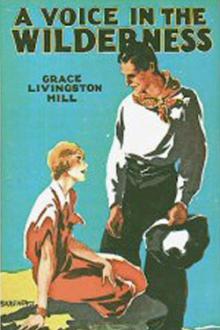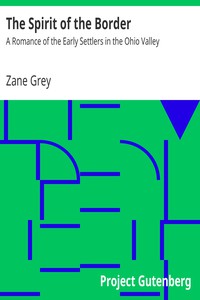Astoria; Or, Anecdotes of an Enterprise Beyond the Rocky Mountains, Irving [libby ebook reader txt] 📗

- Author: Irving
Book online «Astoria; Or, Anecdotes of an Enterprise Beyond the Rocky Mountains, Irving [libby ebook reader txt] 📗». Author Irving
The soil in the neighborhood of the sea-coast is of a brown color, inclining to red, and generally poor; being a mixture of clay and gravel. In the interior, and especially in the valleys of the Rocky Mountains, the soil is generally blackish, though sometimes yellow. It is frequently mixed with marl, and with marine substances in a state of decomposition. This kind of soil extends to a considerable depth, as may be perceived in the deep cuts made by ravines, and by the beds of rivers. The vegetation in these valleys is much more abundant than near the coast; in fact, it is these fertile intervals, locked up between rocky sierras, or scooped out from barren wastes, that population must extend itself, as it were, in veins and ramifications, if ever the regions beyond the mountains should become civilized.
CHAPTER XL. Natives in the Neighborhood of Astoria—Their Persons and Characteristics.—Causes of Deformity—Their Dress.— Their Contempt of Beards—Ornaments—Armor and Weapons.-Mode of Flattening the Head.—Extent of the Custom.—Religious Belief.-The Two Great Spirits of the Air and of the Fire.— Priests or Medicine Men.—The Rival Idols.—Polygamy a Cause of Greatness-Petty Warfare.—Music, Dancing, Gambling.— Thieving a Virtue.—Keen Traders—Intrusive Habits— Abhorrence of Drunkenness—Anecdote of Comcomly.
A BRIEF mention has already been made of the tribes or hordes existing about the lower part of the Columbia at the time of the settlement; a few more particulars concerning them may be acceptable. The four tribes nearest to Astoria, and with whom the traders had most intercourse, were, as has heretofore been observed, the Chinooks, the Clatsops, the Wahkiacums, and the Cathlamets. The Chinooks reside chiefly along the banks of a river of the same name, running parallel to the sea-coast, through a low country studded with stagnant pools, and emptying itself into Baker’s Bay, a few miles from Cape Disappointment. This was the tribe over which Comcomly, the one-eyed chieftain, held sway; it boasted two hundred and fourteen fighting men. Their chief subsistence was on fish, with an occasional regale of the flesh of elk and deer, and of wild-fowl from the neighboring ponds.
The Clatsops resided on both sides of Point Adams; they were the mere relics of a tribe which had been nearly swept off by the small-pox, and did not number more than one hundred and eighty fighting men.
The Wahkiacums, or Waak-i-cums, inhabited the north side of the Columbia, and numbered sixty-six warriors. They and the Chinooks were originally the same; but a dispute arising about two generations previous to the time of the settlement, between the ruling chief and his brother Wahkiacum, the latter seceded, and with his adherents formed the present horde which continues to go by his name. In this way new tribes or clans are formed, and lurking causes of hostility engendered.
The Cathlamets lived opposite to the lower village of the Wahkiacums, and numbered ninety-four warriors.
These four tribes, or rather clans, have every appearance of springing from the same origin, resembling each other in person, dress, language, and manners. They are rather a diminutive race, generally below five feet five inches, with crooked legs and thick ankles—a deformity caused by their passing so much of their time sitting or squatting upon the calves of their legs and their heels, in the bottom of their canoes—a favorite position, which they retain, even when on shore. The women increase the deformity by wearing tight bandages round the ankles, which prevent the circulation of the blood, and cause a swelling of the muscles of the leg.
Neither sex can boast of personal beauty. Their faces are round, with small but animated eyes. Their noses are broad and flat at top, and fleshy at the end, with large nostrils. They have wide mouths, thick lips, and short, irregular and dirty teeth. Indeed good teeth are seldom to be seen among the tribes west of the Rocky Mountains, who live simply on fish.
In the early stages of their intercourse with white men, these savages were but scantily clad. In summer time the men went entirely naked; in the winter and in bad weather the men wore a small robe, reaching to the middle of the thigh, made of the skins of animals, or of the wool of the mountain sheep. Occasionally, they wore a kind of mantle of matting, to keep off the rain but, having thus protected the back and shoulders, they left the rest of the body naked.
The women wore similar robes, though shorter, not reaching below the waist; besides which, they had a kind of petticoat, or fringe, reaching from the waist to the knee, formed of the fibres of cedar bark, broken into strands, or a tissue of silk grass twisted and knotted at the ends. This was the usual dress of the women in summer; should the weather be inclement, they added a vest of skins, similar to the robe.
The men carefully eradicated every vestige of a beard, considering it a great deformity. They looked with disgust at the whiskers and well-furnished chins of the white men, and in derision called them Long-beards. Both sexes, on the other hand, cherished the hair of the head, which with them is generally black and rather coarse. They allowed it to grow to a great length and were very proud and careful of it, sometimes wearing it plaited, sometimes wound round the head in fanciful tresses. No greater affront could be offered to them than to cut off their treasured locks.
They had conical hats with narrow rims, neatly woven of bear grass or of the fibres of cedar bark, interwoven with designs of various shapes and colors; sometimes merely squares and triangles, at other times rude representations of canoes, with men fishing and harpooning. These hats were nearly waterproof, and extremely durable.
The favorite ornaments of the men were collars of bears’ claws, the proud trophies of hunting exploits; while the women and children wore similar decorations of elks’ tusks. An intercourse with the white traders, however, soon effected a change in the toilets of both sexes. They became fond of arraying themselves in any article of civilized dress which they could procure, and often made a most grotesque appearance. They adapted many articles of finery, also, to their own previous tastes. Both sexes were fond of adorning themselves with bracelets of iron, brass, or copper. They were delighted, also, with blue and white beads, particularly the former, and wore broad tight bands of them round the waist and ankles, large rolls of them round the neck, and pendants of them in the ears. The men, especially, who in savage life carry a passion for personal decoration further than the females, did not think their gala equipments complete unless they had a jewel of hiaqua, or wampum, dangling at the nose. Thus arrayed, their hair besmeared with fish oil, and their bodies bedaubed with red clay, they considered themselves irresistible.
When on warlike expeditions, they painted their faces and bodies in the most hideous and grotesque manner, according to the universal practice of American savages. Their arms were bows and arrows, spears, and war clubs. Some wore a corselet of pieces





Comments (0)